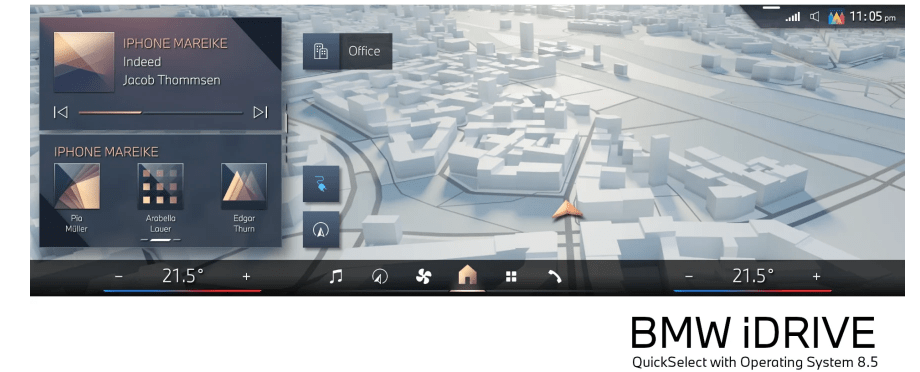Probably one of the few people ever pulled over by the FCC.

Jason Humphreys, the driver from Florida, was recently ordered to pay a fine of $48,000 after getting caught for his illegal activities. He was found to have hidden a high-powered phone jammer underneath his vehicle’s passenger seat. It was revealed that he had been disrupting cellular services during his daily commute to Tampa.
The Federal Communications Commission (FCC), which looked into the matter, confirmed that Humphreys had caused significant interference to cellular services across a large stretch of Interstate 4. To make matters worse, his disruptive activities also affected emergency communications such as those of the police department.
The FCC took strict action against the offender and ordered him to pay a hefty fine as a punishment for his detrimental actions. The use of a jammer is illegal, as it disrupts important communication channels and can have serious consequences. This serves as a warning for anyone who may be tempted to use a jammer in the future. Disrupting communication channels is a serious offense and will not be tolerated by the authorities.
When he was caught in 2014, Humphreys had been under surveillance by FCC agents and the police for several days as they tried to locate the source of a mobile phone deadzone. He had explained to the authorities that he was frustrated by the number of people using mobile phones while driving. However, it is important to note that Florida only bans texting while driving, but not talking on the phone. The FCC has strict rules that protect emergency workers and their communication systems, so interfering with these systems is not allowed.
The use of cell phone jamming devices is also not allowed by the FCC. Recently, the Chinese company CTS Technology Co. was fined almost $35 million by the FCC for marketing 285 different models of signal jammers. It is clear that the FCC takes such violations seriously and intends to enforce their rules to protect both emergency responders and the public. As such, it is important to be aware of the regulations governing the use of mobile phones and related devices to avoid any potential legal issues.
Full $7,500 Tax Credit Available for Cheapest Tesla Model 3 Now
The rear-wheel drive model was qualified for half that amount after the US changed its tax credit guidelines

If you’re buying a Tesla Model 3 in the US, you can now get the maximum possible tax credit of $7,500 no matter what make you’re getting. Tesla has updated its website to show that the rear-wheel drive Model 3, along with its long range and performance counterparts, now qualify for the full federal tax credit for EVs. You’ll also get to the enjoy the same amount of savings if you’re buying the all-wheel, long-range or performance Model Y.
The US government issued a revised set of guidelines for which electric vehicles qualify for the federal $7,500 EV tax credit in March to comply with the Inflation Reduction Act rules the president signed last year. Under the new guidelines, which went into effect on April 18th, vehicles using battery components that are 50 percent made or assembled in the US qualify for a tax credit of $3,750. They can only get the full $7,500 credit if their manufacturer sources at least 40 percent of their critical minerals from the US or its free trade partners, which don’t include China.
A lot of EVs were kicked off the list of vehicles qualified for credits when the change was implemented, but some were re-added in the days that followed. You could only subtract $3,750 from your taxes for Tesla’s rear-wheel drive and long range Model 3 due to the new guidelines, but that’s no longer the case. It’s not quite clear if Tesla altered the cars’ batteries or found new suppliers to ensure that its new Model 3 deliveries meet the requirements for the new guidelines. But this means in some locations, you could get the standard version of the vehicle for just a bit more than $30,000 — or maybe even less than that if the state has its own perks for EVs.
BMW reveals three new EVs for its summer 2023 lineup
The automaker is also updating its infotainment software.

As part of its summer 2023 lineup, BMW has announced several new electric vehicles. All-wheel-drive enthusiasts will be delighted to hear that the i4 xDrive 40, a variant of the i4, is on the way. Additionally, the automaker will be releasing the single-motor i7 eDrive50 and the hybrid 750e xDrive.
In addition to the new vehicle models, BMW is also unveiling an updated infotainment operating system for select models. This is sure to please tech-savvy drivers who are always on the lookout for the latest and greatest in-car technology.
With these new offerings, BMW shows a continued commitment to the electric vehicle market and providing options for drivers who want to reduce their carbon footprint without sacrificing performance or style.
BMW has recently released details about its upcoming electric and hybrid models set to launch in the US market. The 2024 i4 xDrive40 is an all-wheel-drive electric vehicle with dual motors providing an estimated 307-mile range using standard 18-inch tires. It can accelerate from zero to 60 in just 4.9 seconds, generating 396 horsepower. The i4 xDrive40 will start at $61,600 with an added $995 destination fee and is expected to begin US-based deliveries in the third quarter of 2023.
The i7 eDrive50 is a rear-wheel-drive electric model powered by a single GEN5 motor generating 449 horsepower. BMW has yet to announce range and performance details but has confirmed that the model will start at $105,700 (plus destination fee). Meanwhile, the 750e xDrive is a plug-in hybrid that combines a 308-horsepower six-cylinder internal combustion engine with a 194-horsepower electric motor. It generates 483 horsepower and 516 lb-ft of torque, and has a purely electric range rated at 35 miles. The 750e xDrive starts at $107,000 with the same $995 destination fee and launches in the US this autumn.

The automaker is updating its infotainment operating system “in certain models.” BMW Operating System 8.5 gives the home screen “clearly arranged functions” designed to work better on the company’s curved display. Ridding itself of sub-menus, it uses a “zero-layer principle” that keeps all relevant controls and information on a single level, using widgets arranged vertically on the driver’s side. In addition, it includes symbols to quick-access the climate control menu, app library, navigation and Apple CarPlay / Android Auto.
Faraday Future’s FF 91 electric vehicles will cost as much as $309,000
The company will only manufacture 300 limited edition FF 91 2.0 Futurist Alliance EVs.

Faraday Future has officially launched its long delayed FF 91 electric vehicles, including a limited edition called the Futurist Alliance that carries a pretty hefty price tag of $309,000. As Autoblog notes, that’s even more expensive than the $249,000 Lucid Air Sapphire, a “ultra-high-performance” EV with similar specs. The company’s FF 91 2.0 Futurist model will sell for the same price as the Air Sapphire at $249,000, while the base FF 91 2.0, which is expected to be the most affordable of the three, doesn’t have pricing yet.
Both the FF91 2.0 Futurist Alliance and Futurist models are powered by three electric motors and can go from 0 to 60mph in 2.27 seconds. The 1050 horsepower vehicles can go as fast as 155 mph, and their 142kWh battery can sustain a range of approximately 381 miles — shorter than the range of a Tesla Model S but longer than a Model Y’s. They both have the same “zero gravity” seats that have a large recline angle for comfort, as well as 27-inch rear passenger displays.
However, the automaker will only produce 300 Futurist Alliance EVs, which will feature an exclusive wheel design and will be available in bright silver, matte silver and matte black. Futurist Alliance owners will also receive exclusive professional track-time training and an Apple Watch loaded with the automaker’s vehicle control features. Plus, the first 91 owners will get a high-speed internet satellite communications suite included with their purchase.
In addition to announcing the two models’ prices, Faraday Future has also launched the FF aiHypercar+, a “mobility ecosystem product” with a rather vague description at the moment. According to Autoblog, the subscription service will give customers access to some kind of AI assistant personalization and vehicle maintenance. It will cost the first 2,000 users in US and China an eye-watering $14,900 a year, so everyone else will have to be prepared to pay more than that.
Preorders for the FF91 2.0 Futurist Alliance and Futurist models are now open to interested buyers in the US and China for a deposit of $5,000 and $1,500, respectively. They don’t have a delivery date yet, but Faraday Future says its three-phase delivery plan started on May 31st. The company will hold an event for a group of customers it’s calling “Industry Expert FPO(s)” on June 6th, after which they’ll get the chance to pay for and get the first delivery units.